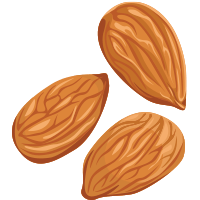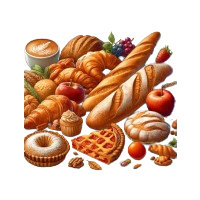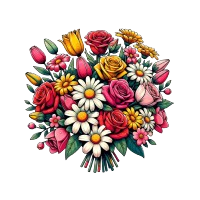Among Louis Roederer’s champagnes, Carte Blanche is the one with the highest dosage and thus the sweetest in the range. The wine is made from 40% Pinot Noir, 42% Chardonnay, and 18% Pinot Meunier from 40 different parcels. The majority of the grapes come from Louis Roederer’s own vineyards in “La Rivière,” “La Montagne,” and “La Côte,” but also from a few winegrowers with whom they regularly collaborate. To ensure consistency in style, Carte Blanche is made from six different vintages, about 10% of which come from Louis Roederer’s famous “Réserve” and are selected from the oldest vintages.
The wine ferments in the bottle for 3 years, and the “dosage,” i.e., the sugar liqueur added when bottle fermentation is complete, amounts to approximately 38 g per liter, compared to 10-11 g in, for example, Collection Brut. After disgorgement, the wine is further aged for 6 months before release.
Carte Blanche has Roederer’s typical complexity and structure, as well as a delicate balance between smoothness and freshness. It reveals notes of white flowers, almonds, baked apples, pastries, and white chocolate. It pairs best with desserts featuring vanilla, honey, mild chocolate or marzipan, ice cream, and fruit tarts.
Champagne Louis Roederer is undoubtedly in a very privileged position, owning 214 hectares of Champagne’s best vineyards and thus being almost self-sufficient in grapes. The vineyards are fairly evenly distributed across the three top regions in Champagne – Montagne de Reims, Vallée de la Marne, and Côte des Blancs, covering 80-85% of Louis Roederer’s total grape needs. 97% of the vineyards are classified as Grand Cru or Premier Cru, and the same prestigious classification applies to the vineyards in Bouzy and Ambonnay, where they source the remainder of the grapes they need.
Over the past several years, Louis Roederer has gradually adapted its production to follow the most sustainable principles – including organic/biodynamic farming. They have already achieved DEMETER certification (biodynamic farming) for the vineyards that produce grapes for the house’s finest label, Cristal. From the 2021 vintage onwards, an additional 115 hectares of vineyards have achieved organic certification, with the remaining vineyards to follow.
Vinification takes place in modern stainless steel tanks of 60-100 hl, ensuring optimal hygiene and complete control over all processes. A couple of floors underground lies Louis Roederer’s unique “Vins de Réserve,” a stock of older wines stored in used oak barrels of 60 hl and stainless steel tanks (Perpetual Reserve). Reserve wines are used to varying degrees in the production of the non-vintage champagnes to ensure consistency in both style and quality for each bottle.
Champagne Louis Roederer has long been at the absolute top of the Champagne world, and today no house enjoys greater prestige than Louis Roederer.




